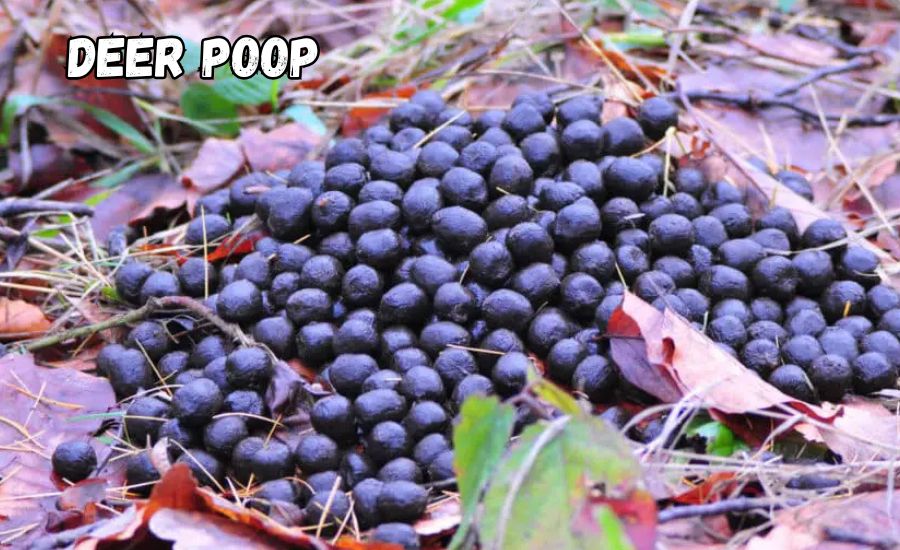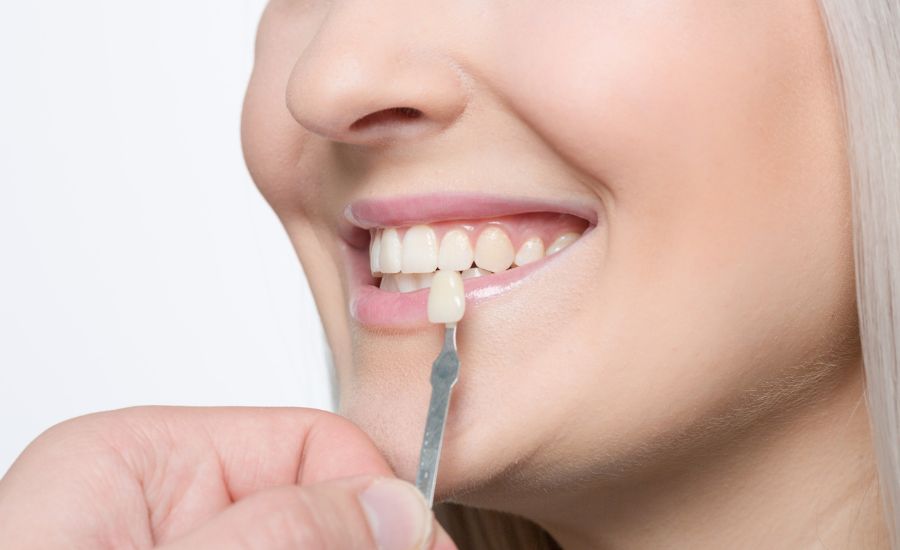Deer Poop: What It Tells Us About These Wild Animals!
Deer poop is something you might see in the woods or even in your backyard. It looks like small, dark pellets and is usually found in piles. But did you know that deer poop can tell us a lot about these animals? By looking at their poop, we can learn about their diet, health, and even where they like to go!
Deer poop is also a clue for hunters, hikers, and nature lovers. If you find fresh deer poop, it means a deer was there not too long ago. The shape, size, and colour of the poop can even help guess if the deer is young or old. Isn’t that interesting? Let’s find out more about this tiny but essential sign of wildlife!
What is Deer Poop and How Does It Look?
Deer poop is small, round, and dark brown or black. It usually appears in piles or scattered across the ground. When fresh, these pellets are smooth and firm but turn dry and crumbly over time.
Every deer leaves behind poop, and it helps us understand their movement. The size and shape of the poop can even give clues about whether a deer is young or fully grown. Observing their poop is one way to learn more about these animals in the wild.
Many people mistake deer poop for rabbit droppings because they look similar. However, rabbit pellets are usually smaller and more round. Deer poop can also change in size and texture depending on their diet and hydration levels.
Why Do Deer Poop in Piles?
Deer poop often appears in small piles rather than spread out randomly. This happens because deer habitually stop to relieve themselves in one place before moving on. Their digestive system processes food quickly, so they poop frequently throughout the day.
Each time a deer eats, it takes only a few hours for the food to pass through its body. This is why you may see several piles of poop in one area if deer have been feeding nearby. It’s a natural part of their routine.
Sometimes, deer poop is scattered instead of in piles. This happens when they move around while pooping or if they are frightened and running. The way their poop is found can help track their activity in an area.
What Can Deer Poop Tell Us About Their Diet?

Deer poop changes based on what they eat. If a deer has been eating fresh plants and leaves, the poop is usually soft and moist. In winter, when they eat dry twigs and bark, their poop becomes more complex and drier.
Different seasons bring different foods, so their poop changes throughout the year. In the summer, when deer eat fruits and greens, their poop may be darker and softer. In colder months, it becomes lighter and firmer.
By studying deer poop, researchers can understand what deer eat in different areas. This information helps protect deer and ensure they have enough food to survive in the wild.
How to Tell Fresh Deer Poop from Old Poop
Fresh deer poop is dark, shiny, and slightly moist. It usually has a strong smell, especially in warm weather. The pellets are soft when touched but still hold their shape.
As time passes, deer poop changes colour and texture. Old poop becomes dry, light brown, or greyish. It may also break apart easily when stepped on or touched.
Knowing the difference between fresh and old poop is helpful for hunters and wildlife trackers. Fresh poop means deer have been in the area recently, while old poop suggests they have moved elsewhere.
Is Deer Poop Harmful to Humans?
Deer poop is usually not dangerous, but it can carry bacteria and parasites. Touching it with bare hands is not recommended, as it may cause infections if not appropriately washed afterwards.
Sometimes, deer poop contains tiny worms or harmful germs. If pets eat it, they might get sick. It’s best to keep pets away from areas with a lot of deer poop to avoid health problems.
If deer poop is found in gardens or near water sources, it could spread bacteria. Washing vegetables and keeping drinking water clean helps prevent any risks from deer waste.
What to Do If You Find Deer Poop in Your Yard
Finding deer poop in your yard means deer have been visiting. This could be because they found food like grass, flowers, or vegetables.
Cleaning up deer poop is simple. Use gloves and a shovel to remove it, then wash the area with water. If the poop is dry, it can be left to break down naturally without harming the soil.
To prevent deer from returning, try using fences or natural deer repellents. Removing food sources like fallen fruits and garden plants can also keep deer away from your yard.
How Hunters Use Deer Poop to Track Deer

Hunters use deer poop to learn where deer have been recently. Fresh poop means deer are nearby, while old poop shows they were there days ago.
By looking at the size and shape of the poop, hunters can guess if the deer is young or old. Larger pellets usually come from bigger deer, while smaller ones are from younger ones.
Tracking deer poop helps hunters find suitable locations to wait for deer. It gives clues about their feeding and resting spots, making hunting more successful.
Different Types of Deer Poops and What They Mean
Deer poop can look different depending on their diet and health. Normal poop is round, smooth, and firm. If deer eat fresh plants, their poop may be softer and darker.
Unusual poop, like very soft or runny droppings, could mean the deer is sick. If a deer eats dry food, the poop may be more complex and lighter in colour.
Observing deer poop helps scientists understand their health. It also lets farmers and landowners know if deer in their area eat well.
Does Deer Poop Change in Different Seasons?
Deer poop changes with the seasons. In summer, when deer eat green plants and fruits, their poop is moist and dark. During winter, when food is dry, their poop becomes firmer and lighter in colour.
Spring brings fresh grass, and deer poop may be softer again. In fall, when deer eat nuts and acorns, the poop is solid and dark brown.
The changes in deer poop show how their food supply affects their body. It’s one-way nature tells us what animals are eating throughout the year.
Fun Facts About Deer Poop You Didn’t Know!
Deer poop might not seem interesting, but it has some surprising facts! Did you know deer can poop up to 13 times a day? That’s a lot of droppings!
Some animals, like rabbits, might eat deer poop for extra nutrients. It sounds strange, but it helps them survive in the wild.
Scientists sometimes collect deer poop to study DNA and learn about deer populations. Poop can tell us a lot more than we think!
Is Deer Poop Good for Plants and Soil?

Deer poop can be beneficial for plants as it adds nutrients to the soil. It releases organic matter that helps plants grow healthier when it breaks down.
Gardeners sometimes use deer poop as fertilizer, but it must be composted first to remove bacteria. Fresh deer poop can carry germs that could harm plants or soil.
If deer poop is found in a garden, it is best to clean it up and let it decompose in a separate composting area. This makes the soil more prosperous and safer for planting.
How to Keep Deer (and Their Poop) Away from Your Garden
Deer love to visit gardens, but their poop can be messy and harmful. Fencing is one of the best ways to keep them out and protect plants.
Using strong smells, such as garlic, soap, or pepper spray, can also deter deer. Deer do not like strong scents and will avoid places with them.
Keeping the yard clean by removing fallen fruits and trimming plants helps. This way, deer won’t find easy food and will look elsewhere.
How Other Animals React to Deer Poop
Other animals often notice deer poop and may react differently to it. Some small animals, like rodents and insects, may investigate or feed on parts of it.
Predators, like foxes or coyotes, may sniff around deer poop to track their prey. The smell tells them if a deer has been nearby recently.
Some birds, like crows, might pick through deer poop to find seeds. Nature works in surprising ways, and even deer poop plays a role in the food chain.
What Scientists Can Discover from Deer Poop
Deer poop provides valuable clues about the animal’s diet, habitat, and overall well-being. Researchers analyze it to understand what deer eat and how their food sources change with the seasons.
By studying poop samples, scientists can also track deer populations in different areas. DNA testing from the droppings helps identify individual deer and monitor their movement patterns. This method is helpful for wildlife conservation and management.
Additionally, deer poop reveals how healthy the environment is. If pollutants or harmful substances are found in the droppings, it indicates possible issues in the ecosystem. This makes deer poop an essential tool for ecological studies.
Can a Deer’s Health Be Determined by Its Poop?

Yes, a deer’s poop can tell a lot about its health. Healthy deer poop is firm, round, and dark brown, showing that the deer is eating a balanced diet. Any changes in texture or colour might indicate a problem.
If deer poop appears very soft or watery, it could mean the animal is sick or suffering from digestive issues. Lighter-coloured droppings may suggest a poor diet or dehydration, especially during dry seasons.
Scientists and wildlife experts check deer poop to spot diseases or parasites. If unusual substances are found in the droppings, it may signal health concerns that need further investigation. Keeping an eye on deer poop helps ensure the well-being of deer populations.
Conclusion
Deer poop may seem like a small thing, but it tells a big story. Scientists use it to learn about deer health, diet, and where they live. It also helps people understand the environment and how natural changes affect wildlife. By studying deer poop, experts can protect deer and keep their habitat safe.
Next time you see deer poop in the wild, remember it is more than just waste. It is a sign of a healthy animal and a healthy environment. Whether you are a scientist or just a nature lover, paying attention to deer poop can teach you a lot about these fantastic creatures!
Uncover More: Vistablogs
FAQs
Q: What does healthy deer poop look like?
A: Healthy deer poop is dark brown, firm, and shaped like tiny pellets.
Q: Can deer poop spread diseases?
A: Yes, deer poop can carry bacteria or parasites that may affect other animals or humans.
Q: How often do deer poop?
A: Deer poop several times a day, especially after eating.
Q: Does deer poop smell bad?
A: No, deer poop has a mild smell compared to carnivore droppings because they eat plants.
Q: Can you tell a deer’s diet from its poop?
A: Yes, scientists can study deer poop to see what plants they have been eating.
Q: Is deer poop dangerous to touch?
A: It is best to avoid touching it, as it may contain harmful bacteria or parasites.
Q: Do deer poop in the same place?
A: Not always, but they often return to familiar areas to poop.
Q: Why do scientists study deer poop?
A: Scientists study deer poop to learn about deer health, diet, and habitat changes.





Post Comment